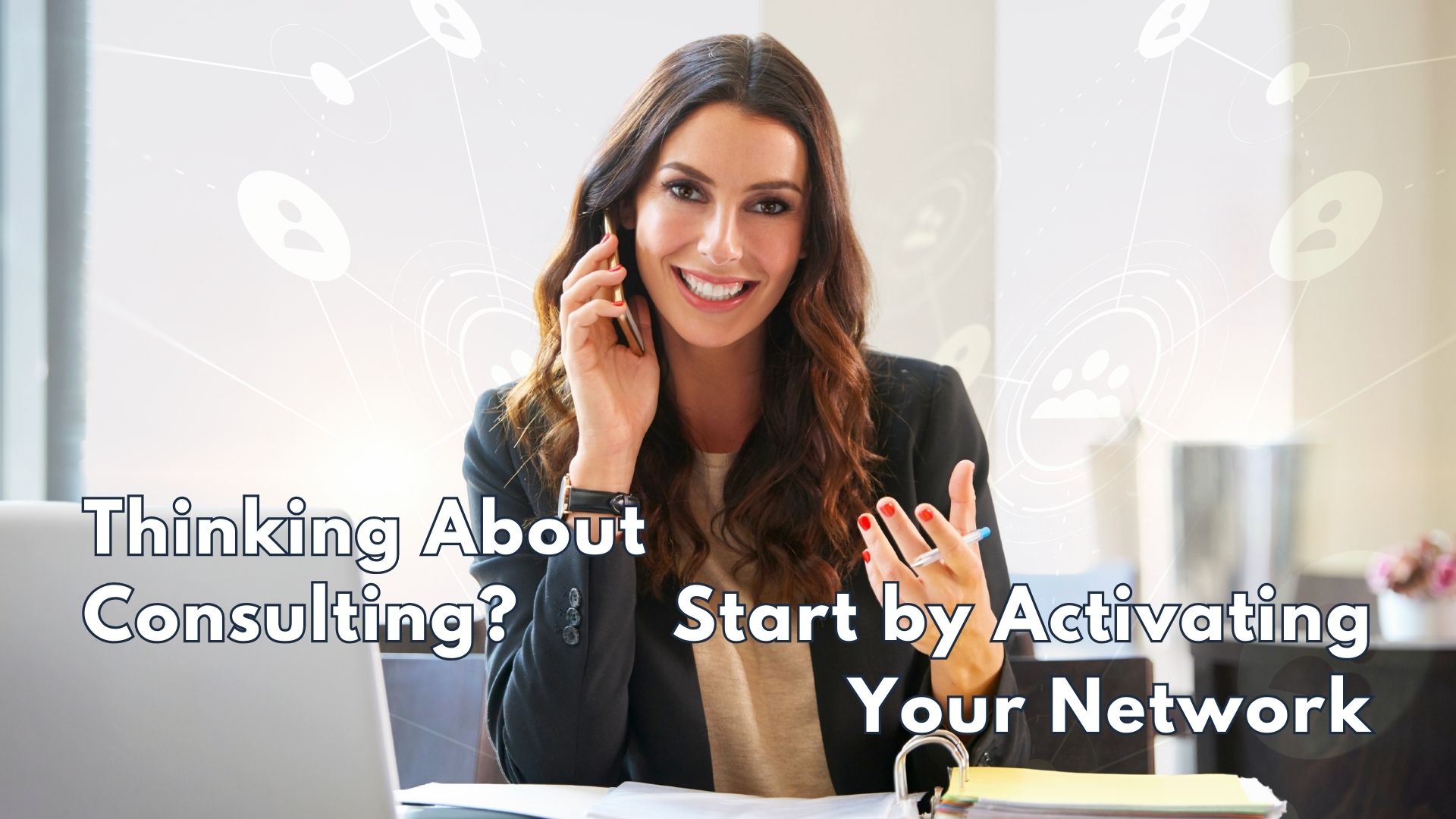If you’re considering stepping away from corporate life and into consulting, your first instinct might be to start building a brand or launching a website.
But the truth is, you probably already have what you need to get started: a strong professional network.
The question is, does your network know how to help you?
In most cases, they don’t. Not because they don’t want to, but because they’re not sure what you’re doing now or how to describe it to others.
If you want to get opportunities coming your way, you need to activate and nurture those relationships.
Here’s how to do that in a way that feels natural.
Step 1: Quietly Let People Know What You’re Exploring
This isn’t about making a big LinkedIn announcement. In fact, if you’re still employed, you probably shouldn’t do that.
Instead, start with one-on-one conversations. Reach out to people you’ve worked with, people who’ve seen you in action, or people you’ve stayed in touch with casually over the years. Send a simple message like:
“Hi [Name], I’m starting to explore some consulting work focused on [your area of expertise]. If you come across anyone who’s navigating [specific challenge], feel free to connect us. I’d really appreciate it.”
This kind of message is easy to send, easy to respond to, and easy to act on. You’re not asking for a favor, you’re letting them be helpful.
Step 2: Post Content That Makes It Clear What You Know
You don’t need to post daily or start calling yourself a thought leader. But if you want to stay top-of-mind, share a few short posts that highlight how you think.
The most effective content is rooted in problems:
- Mistakes you’ve seen (and what to do instead)
- Insights from complex projects
- Patterns you’ve noticed in a specific industry or role
- Advice you find yourself giving again and again
The goal isn’t to get likes. It’s to help people connect the dots between your background and their current needs—or the needs of someone in their circle.
Step 3: Reconnect Without Making It Weird
If it’s been a while since you talked to someone, you don’t need an excuse or a long backstory. A simple note works fine:
“Hi [Name], I’ve been thinking about our time working on [project]. I still use some of the lessons from that. What are you into these days? Let me know if you’re up for a quick catch-up.”
Once you’re back in conversation, it’s easy to mention what you’re exploring. And if they don’t need what you offer? That’s fine. The real opportunity is usually one degree removed – it’s someone they know.
Step 4: Help Them Help You
If someone wants to refer you, can they easily explain what you do? Can they describe who you help and why it matters?
Work on an elevator pitch that you can put in your LinkedIn profile and include in emails. Try something like:
“I work with operations leaders at growth-stage companies to fix delivery bottlenecks and scale execution.”
Or even better, share a short example:
“I recently worked with a $30M SaaS company that needed help getting their product and ops teams aligned. We got time-to-delivery down by 27% in three months.”
When people understand what you do, it’s much easier for them to keep you in mind when opportunities come up.
Step 5: Stay Visible
You don’t have to be active on LinkedIn every day. You just have to be lightly present:
- Share a post once a week or every other week
- Leave a thoughtful comment on a few posts from your peers
- Reach out to someone every now and then just to say hello
- Share a resource, a job lead, or an intro when it makes sense
Fifteen minutes a week can be enough. You’re not marketing in the traditional sense. You’re staying active in your professional ecosystem so when someone does need help, they think of you.
Mindshare = Referrals
Your best consulting opportunities aren’t going to come from strangers. They’re going to come from people who already know your value. They just need a gentle reminder of how you can help now.
You don’t need to promote yourself. You just need to start a few conversations and show up consistently.
Need help figuring out what to say or how to position yourself?
We work with senior leaders to clarify their message, build the right kind of visibility, and reconnect with the people most likely to open doors. If you’re ready to explore consulting but want help getting traction, let’s talk.

